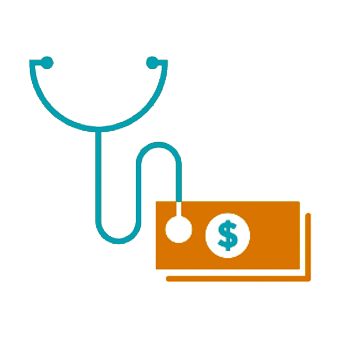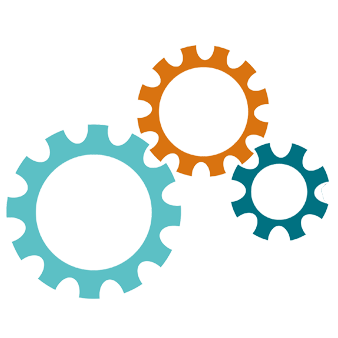This report describes the services The Hilltop Institute provided to the Maryland Department of Health (the Department) under the Master Agreement between Hilltop and the Department. The report covers fiscal year (FY) 2018 (July 1, 2017, through June 30, 2018). Hilltop’s interdisciplinary staff provided a wide range of services, including: Medicaid program development and policy analysis; HealthChoice program support, evaluation, and financial analysis; long-term services and supports program development, policy analysis, and financial analytics; and data management and web-accessible database development.
This chart book, prepared for the Maryland Department of Health, compares the FY 2019 Medicaid reimbursement rates of Maryland and its surrounding states with Maryland’s Medicare fee schedule for CY 2018 for the Baltimore region. The surrounding states included in this study are Washington, DC; Delaware; Pennsylvania; Virginia; and West Virginia. Physician fees comprise three components: physician’s work, practice expense, and malpractice insurance expense.
This report presents to the Center for Mississippi Health Policy the results of a model for estimating tobacco-related costs for Mississippi Medicaid participants using administrative claims data for calendar years (CYs) 2016 and 2017. Tobacco-related costs were estimated to be $388 million in 2016 and $396 million in 2017. This report describes the various methods that were used to develop these cost estimates.
The Maryland Community Health Resources Commission (CHRC) aims to expand access to health care for low-income Marylanders and underserved communities and increase the capacity of the state’s health care safety net infrastructure to deliver high-quality, affordable health care. The CHRC sponsors a grants program that has awarded 210 grants totaling $64.1 million since its inception. In spring 2016, the CHRC contracted with Hilltop to assess the programs of four selected 2016 grant recipients: Potomac Healthcare Foundation, Lower Shore Clinic, Garrett County Health Department, and Baltimore City Health Department. The objective of the assessments was to determine the extent to which the programs had an impact on health services utilization and costs for participating Medicaid beneficiaries. This summary report discusses Hilltop’s assessment methodology, limitations, and key findings.
In the fall of 2012, the Maryland Health Benefit Exchange (MHBE) convened a stakeholder advisory committee to develop recommendations to promote continuity of care for individuals transitioning between health plans. In response to these recommendations, the Maryland Health Progress Act of 2013 established new statutory continuity of care requirements to advance Maryland’s progress in protecting residents from harmful disruptions in health care services and to promote the reasonable continuity of health care for all individuals who may be transitioning between plans. This law also requires the MHBE, the Maryland Department of Health (MDH), the Maryland Insurance Administration (MIA), and the Maryland Health Care Commission (MHCC) to conduct a study on the implementation and efficacy of the continuity of care requirements. Hilltop conducted the study and drafted the report on behalf of the MHBE.
Hilltop staff presented at the 2018 AcademyHealth Annual Research Meeting (ARM) in Seattle in June. Senior Policy Analyst Shamis Mohamoud, MA, gave this podium presentation, which provided an overview of Hilltop’s evaluation of the Maryland Health Home Program.
Hilltop staff presented at the 2018 AcademyHealth Annual Research Meeting (ARM) in Seattle in June. Policy Analyst MaryAnn Mood, MA, presented this poster about Hilltop’s study regarding the gradual implementation of Community First Choice (CFC) in Maryland. CFC is an optional Medicaid state plan program authorized by the Affordable Care Act (ACA) that enables states to provide home and community-based services (HCBS) to Medicaid-eligible individuals through their state plan and receive a 6 percent increase in their federal match.
This issue brief, published by the Commonwealth Fund, analyzes trends in paid and unpaid personal care and expenditures under a model Medicaid Community First Choice (CFC) program in Maryland. This brief highlights enrollment trends and costs per participant and concludes that a targeted benefit for Medicare beneficiaries could have a stable per-person cost and augment support from family and other unpaid caregivers, although take-up could increase over time to meet unmet need. Hilltop’s Cynthia Woodcock, Ian Stockwell, and Kaitlyn Whiton were contributing authors.
The authors of this article, published by the Journal of Applied Gerontology, interviewed stakeholders in Maryland, one of the first states to adopt CFC, to assess challenges, benefits, and potential implications of this Medicaid option for state and federal policy makers. Study findings suggest that expanding coverage for home and community-based services (HCBS) through CFC in Maryland has been financially feasible, expanded the personal care workforce, and supported a more equitable approach to personal care services. The article concludes that greater coverage for HCBS is a promising avenue to improve access to care for high-need Medicaid beneficiaries. Hilltop’s Cynthia Woodcock and Ian Stockwell were contributing authors.
The Heroin and Opioid Emergency Task Force, established by Maryland Governor Larry Hogan, recommends that the Maryland Department of Health review Maryland Medicaid rates for substance use disorder (SUD) services every three years. This chart book reviews SUD services provided by the Maryland Medicaid program from CY 2012 to CY 2016 and compares the rates with those of Delaware, Pennsylvania, Virginia, West Virginia, and Washington, DC.





